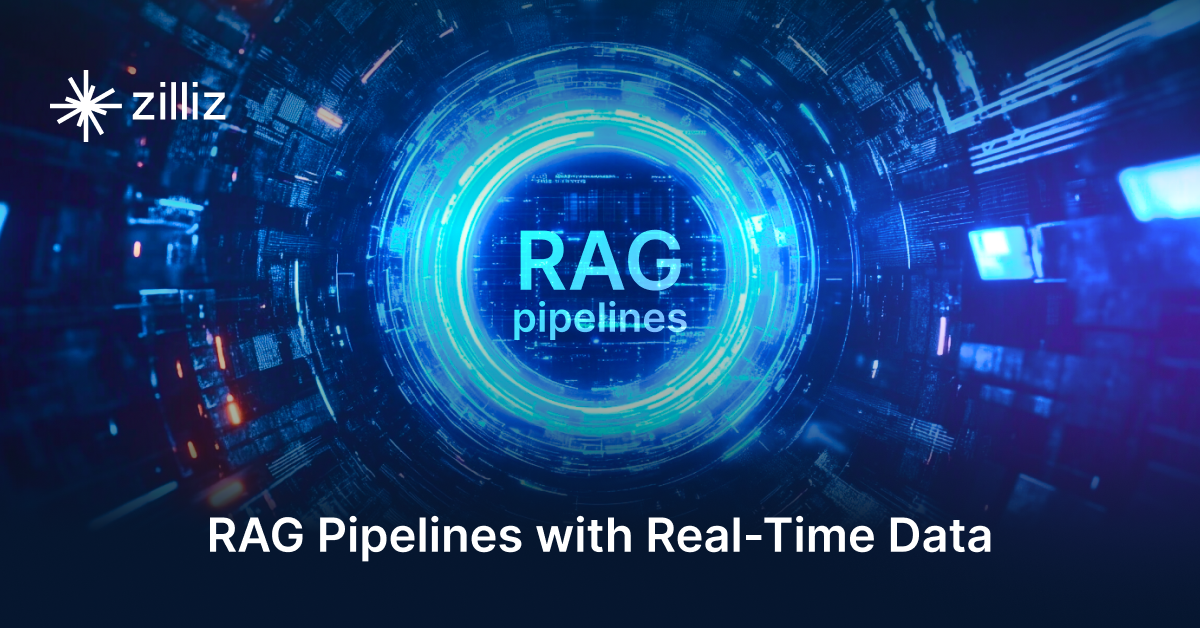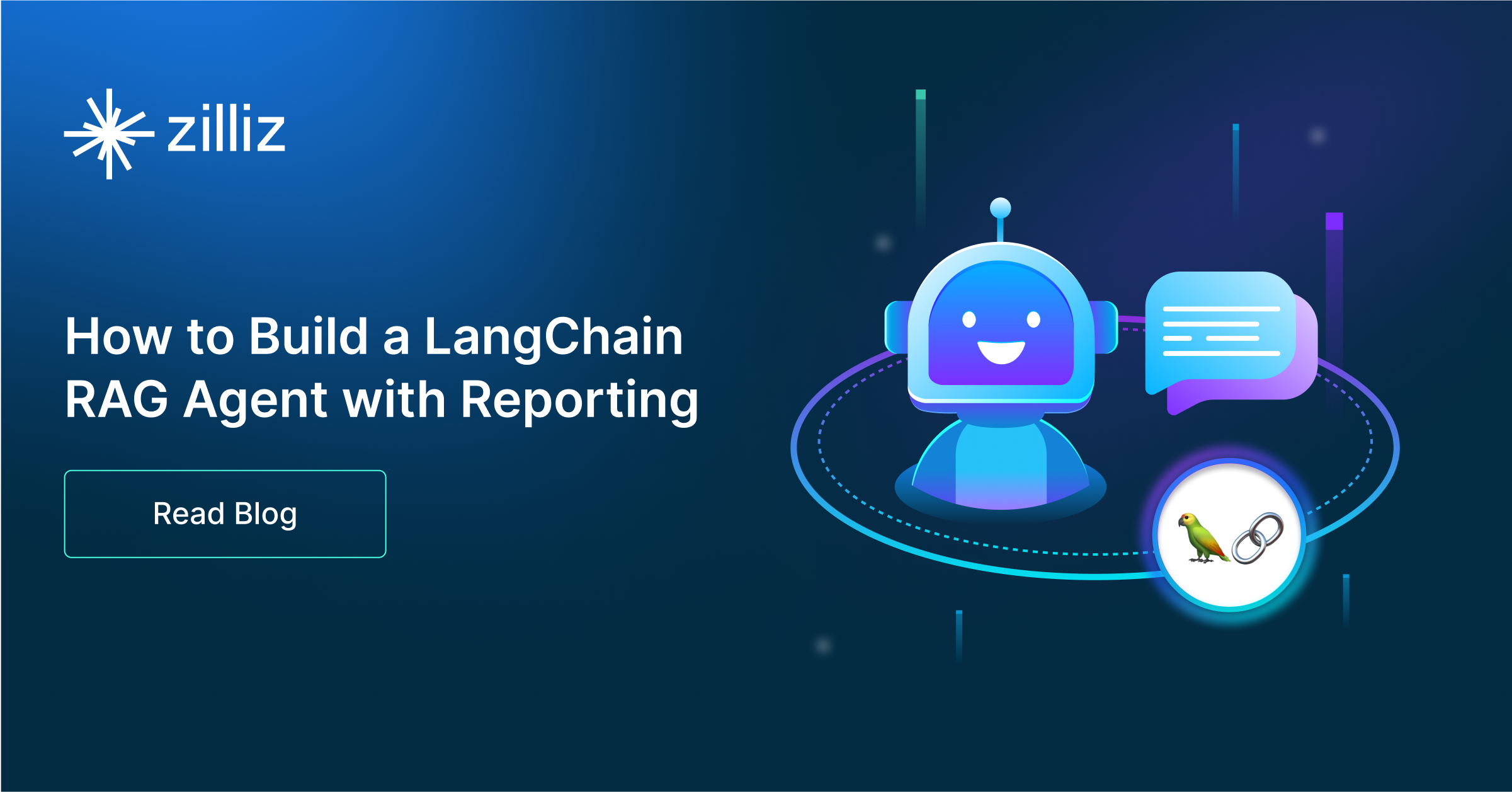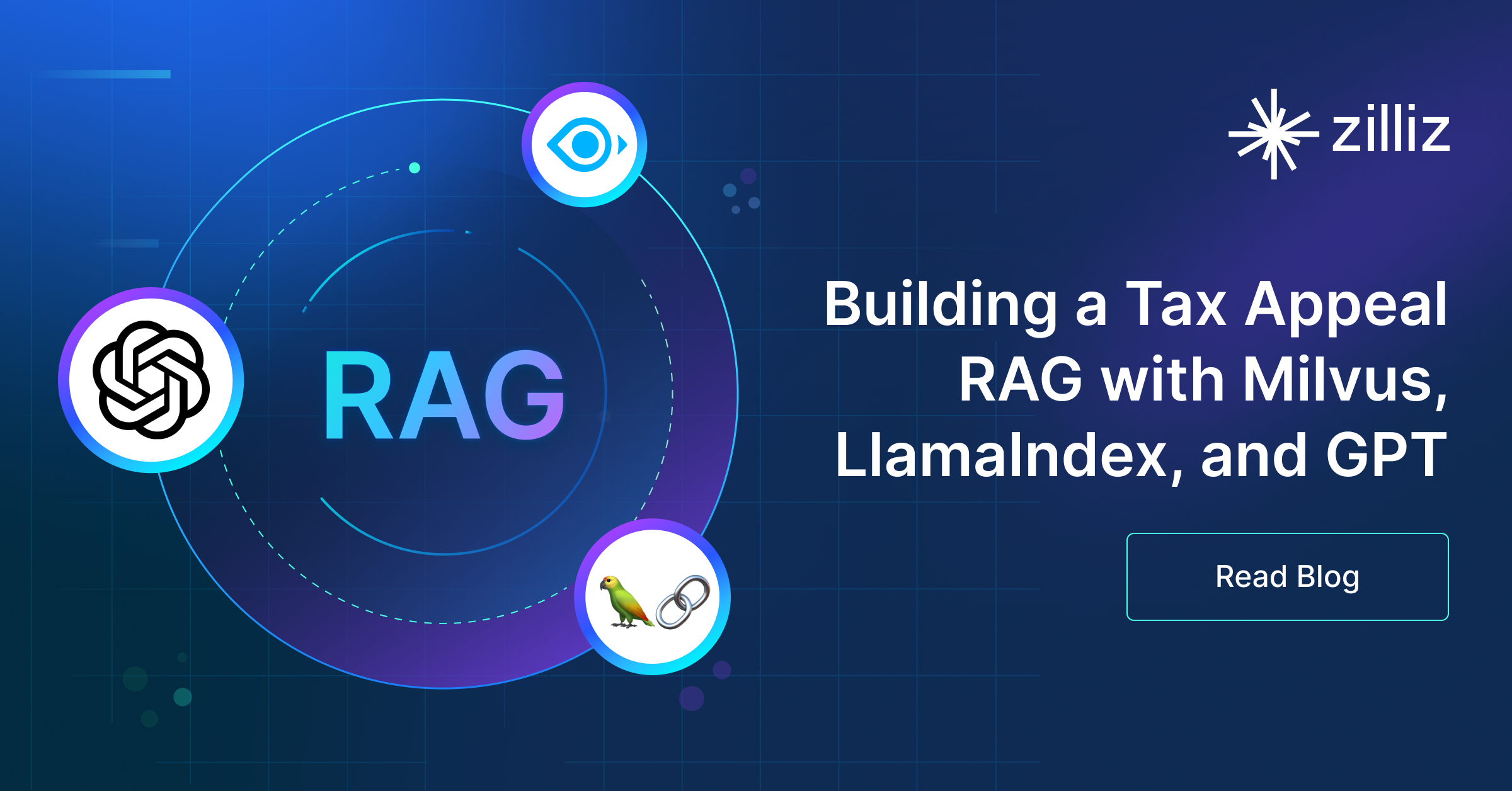Build RAG Chatbot with LangChain, OpenSearch, Fireworks AI Llama 3.1 70B Instruct, and IBM slate-125m-english-rtrvr
Introduction to RAG
Retrieval-Augmented Generation (RAG) is a game-changer for GenAI applications, especially in conversational AI. It combines the power of pre-trained large language models (LLMs) like OpenAI’s GPT with external knowledge sources stored in vector databases such as Milvus and Zilliz Cloud, allowing for more accurate, contextually relevant, and up-to-date response generation. A RAG pipeline usually consists of four basic components: a vector database, an embedding model, an LLM, and a framework.
Key Components We'll Use for This RAG Chatbot
This tutorial shows you how to build a simple RAG chatbot in Python using the following components:
- LangChain: An open-source framework that helps you orchestrate the interaction between LLMs, vector stores, embedding models, etc, making it easier to integrate a RAG pipeline.
- OpenSearch: An open-source search and analytics suite derived from Elasticsearch. It offers robust full-text search and real-time analytics, with vector search available as an add-on for similarity-based queries, extending its capabilities to handle high-dimensional data. Since it is just a vector search add-on rather than a purpose-built vector database, it lacks scalability and availability and many other advanced features required by enterprise-level applications. Therefore, if you prefer a much more scalable solution or hate to manage your own infrastructure, we recommend using Zilliz Cloud, which is a fully managed vector database service built on the open-source Milvus and offers a free tier supporting up to 1 million vectors.)
- Fireworks AI Llama 3.1 70B Instruct: This advanced model is designed for instruction-following tasks, featuring a vast 70 billion parameters for enhanced comprehension and context. It excels in generating coherent, contextually relevant outputs for complex queries, making it ideal for interactive applications, educational tools, and customer support systems requiring detailed and precise information.
- IBM slate-125m-english-rtrvr: This model is designed for fine-tuning English text retrieval tasks, leveraging a slim and efficient architecture. Its strength lies in fast processing and high accuracy, making it ideal for applications that require quick and relevant information retrieval from large text datasets. Use cases include document search engines, chatbots, and content recommendation systems.
By the end of this tutorial, you’ll have a functional chatbot capable of answering questions based on a custom knowledge base.
Note: Since we may use proprietary models in our tutorials, make sure you have the required API key beforehand.
Step 1: Install and Set Up LangChain
%pip install --quiet --upgrade langchain-text-splitters langchain-community langgraph
Step 2: Install and Set Up Fireworks AI Llama 3.1 70B Instruct
pip install -qU "langchain[fireworks]"
import getpass
import os
if not os.environ.get("FIREWORKS_API_KEY"):
os.environ["FIREWORKS_API_KEY"] = getpass.getpass("Enter API key for Fireworks AI: ")
from langchain.chat_models import init_chat_model
llm = init_chat_model("accounts/fireworks/models/llama-v3p1-70b-instruct", model_provider="fireworks")
Step 3: Install and Set Up IBM slate-125m-english-rtrvr
pip install -qU langchain-ibm
import getpass
import os
if not os.environ.get("WATSONX_APIKEY"):
os.environ["WATSONX_APIKEY"] = getpass.getpass("Enter API key for IBM watsonx: ")
from langchain_ibm import WatsonxEmbeddings
embeddings = WatsonxEmbeddings(
model_id="ibm/slate-125m-english-rtrvr",
url="https://us-south.ml.cloud.ibm.com",
project_id="<WATSONX PROJECT_ID>",
)
Step 4: Install and Set Up OpenSearch
pip install --upgrade --quiet opensearch-py langchain-community
from langchain_community.vectorstores import OpenSearchVectorSearch
opensearch_vector_search = OpenSearchVectorSearch(
"http://localhost:9200",
"embeddings",
embedding_function
)
Step 5: Build a RAG Chatbot
Now that you’ve set up all components, let’s start to build a simple chatbot. We’ll use the Milvus introduction doc as a private knowledge base. You can replace it with your own dataset to customize your RAG chatbot.
import bs4
from langchain import hub
from langchain_community.document_loaders import WebBaseLoader
from langchain_core.documents import Document
from langchain_text_splitters import RecursiveCharacterTextSplitter
from langgraph.graph import START, StateGraph
from typing_extensions import List, TypedDict
# Load and chunk contents of the blog
loader = WebBaseLoader(
web_paths=("https://milvus.io/docs/overview.md",),
bs_kwargs=dict(
parse_only=bs4.SoupStrainer(
class_=("doc-style doc-post-content")
)
),
)
docs = loader.load()
text_splitter = RecursiveCharacterTextSplitter(chunk_size=1000, chunk_overlap=200)
all_splits = text_splitter.split_documents(docs)
# Index chunks
_ = vector_store.add_documents(documents=all_splits)
# Define prompt for question-answering
prompt = hub.pull("rlm/rag-prompt")
# Define state for application
class State(TypedDict):
question: str
context: List[Document]
answer: str
# Define application steps
def retrieve(state: State):
retrieved_docs = vector_store.similarity_search(state["question"])
return {"context": retrieved_docs}
def generate(state: State):
docs_content = "\n\n".join(doc.page_content for doc in state["context"])
messages = prompt.invoke({"question": state["question"], "context": docs_content})
response = llm.invoke(messages)
return {"answer": response.content}
# Compile application and test
graph_builder = StateGraph(State).add_sequence([retrieve, generate])
graph_builder.add_edge(START, "retrieve")
graph = graph_builder.compile()
Test the Chatbot
Yeah! You've built your own chatbot. Let's ask the chatbot a question.
response = graph.invoke({"question": "What data types does Milvus support?"})
print(response["answer"])
Example Output
Milvus supports various data types including sparse vectors, binary vectors, JSON, and arrays. Additionally, it handles common numerical and character types, making it versatile for different data modeling needs. This allows users to manage unstructured or multi-modal data efficiently.
Optimization Tips
As you build your RAG system, optimization is key to ensuring peak performance and efficiency. While setting up the components is an essential first step, fine-tuning each one will help you create a solution that works even better and scales seamlessly. In this section, we’ll share some practical tips for optimizing all these components, giving you the edge to build smarter, faster, and more responsive RAG applications.
LangChain optimization tips
To optimize LangChain, focus on minimizing redundant operations in your workflow by structuring your chains and agents efficiently. Use caching to avoid repeated computations, speeding up your system, and experiment with modular design to ensure that components like models or databases can be easily swapped out. This will provide both flexibility and efficiency, allowing you to quickly scale your system without unnecessary delays or complications.
OpenSearch optimization tips
To optimize OpenSearch in a Retrieval-Augmented Generation (RAG) setup, fine-tune indexing by enabling efficient mappings and reducing unnecessary stored fields. Use HNSW for vector search to speed up similarity queries while balancing recall and latency with appropriate ef_search and ef_construction values. Leverage shard and replica settings to distribute load effectively, and enable caching for frequent queries. Optimize text-based retrieval with BM25 tuning and custom analyzers for better relevance. Regularly monitor cluster health, index size, and query performance using OpenSearch Dashboards and adjust configurations accordingly.
Fireworks AI Llama 3.1 70B Instruct optimization tips
Llama 3.1 70B Instruct is a powerful model with a balance of speed and reasoning capabilities. Enhance retrieval performance by using hybrid search methods that incorporate both semantic and keyword-based matching. Keep prompts structured with clear sections, ensuring optimal focus on key information. Set temperature between 0.1 and 0.3, fine-tuning top-k and top-p values to control output variability. Implement caching strategies for frequently used queries to optimize cost and efficiency. Fireworks AI's auto-scaling capabilities allow for dynamic resource allocation—use this to handle peak workloads effectively. Streaming responses can improve user experience for real-time applications. If deploying 70B alongside larger models, use it as an intermediate option for moderately complex queries while reserving the largest models for deep analytical reasoning.
IBM slate-125m-english-rtrvr optimization tips
To optimize the IBM slate-125m-english-rtrvr for Retrieval-Augmented Generation (RAG), ensure that your document retrieval system is fine-tuned with domain-specific data to improve relevance. Utilize embeddings effectively by implementing cosine similarity for efficient nearest neighbor searches, and consider applying caching mechanisms to store frequently accessed documents. Additionally, experiment with various query augmentation techniques, like rephrasing or adding related keywords, to enhance retrieval performance. Monitor and analyze retrieval metrics (such as precision and recall) to iteratively refine your setup, and if possible, implement an ensemble approach by integrating multiple retrieval models to boost diversity in retrieved content. Finally, regularly update your corpus to reflect current knowledge and trends.
By implementing these tips across your components, you'll be able to enhance the performance and functionality of your RAG system, ensuring it’s optimized for both speed and accuracy. Keep testing, iterating, and refining your setup to stay ahead in the ever-evolving world of AI development.
RAG Cost Calculator: A Free Tool to Calculate Your Cost in Seconds
Estimating the cost of a Retrieval-Augmented Generation (RAG) pipeline involves analyzing expenses across vector storage, compute resources, and API usage. Key cost drivers include vector database queries, embedding generation, and LLM inference.
RAG Cost Calculator is a free tool that quickly estimates the cost of building a RAG pipeline, including chunking, embedding, vector storage/search, and LLM generation. It also helps you identify cost-saving opportunities and achieve up to 10x cost reduction on vector databases with the serverless option.
 Calculate your RAG cost
Calculate your RAG cost
What Have You Learned?
By diving into this tutorial, you’ve unlocked the magic of combining cutting-edge tools to build a powerful RAG system! You’ve seen how LangChain acts as the glue, seamlessly orchestrating workflows between components like a conductor leading an orchestra. With OpenSearch as your vector database, you learned to store and retrieve embeddings efficiently, transforming unstructured data into searchable knowledge. The Fireworks AI Llama 3.1 70B Instruct model blew you away with its ability to generate human-like, context-aware responses, while the lightweight IBM slate-125m-english-rtrvr embedding model proved that you don’t need massive resources to create meaningful vector representations. Together, these pieces form a dynamic pipeline: chunking data, embedding it, storing for retrieval, and synthesizing answers that feel almost magical. Plus, you picked up pro tips like optimizing chunk sizes and filtering metadata to boost performance—and even discovered a free RAG cost calculator to keep your projects budget-friendly!
But this is just the beginning! You now have the blueprint to create AI systems that don’t just answer questions but truly understand context. Imagine customizing this pipeline for your own data, tweaking models, or scaling with confidence. The tools are yours to experiment with, and the possibilities are endless. Whether you’re building a smarter chatbot, a research assistant, or an enterprise knowledge hub, you’re equipped to innovate. So fire up your IDE, play with those embeddings, and let your creativity run wild. The future of intelligent applications is in your hands—go build something amazing, share your wins, and keep pushing what’s possible with RAG. The next breakthrough? It could be yours! 🚀
Further Resources
🌟 In addition to this RAG tutorial, unleash your full potential with these incredible resources to level up your RAG skills.
- How to Build a Multimodal RAG | Documentation
- How to Enhance the Performance of Your RAG Pipeline
- Graph RAG with Milvus | Documentation
- How to Evaluate RAG Applications - Zilliz Learn
- Generative AI Resource Hub | Zilliz
We'd Love to Hear What You Think!
We’d love to hear your thoughts! 🌟 Leave your questions or comments below or join our vibrant Milvus Discord community to share your experiences, ask questions, or connect with thousands of AI enthusiasts. Your journey matters to us!
If you like this tutorial, show your support by giving our Milvus GitHub repo a star ⭐—it means the world to us and inspires us to keep creating! 💖
- Introduction to RAG
- Key Components We'll Use for This RAG Chatbot
- Step 1: Install and Set Up LangChain
- Step 2: Install and Set Up Fireworks AI Llama 3.1 70B Instruct
- Step 3: Install and Set Up IBM slate-125m-english-rtrvr
- Step 4: Install and Set Up OpenSearch
- Step 5: Build a RAG Chatbot
- Optimization Tips
- RAG Cost Calculator: A Free Tool to Calculate Your Cost in Seconds
- What Have You Learned?
- Further Resources
- We'd Love to Hear What You Think!
Content
Vector Database at Scale
Zilliz Cloud is a fully-managed vector database built for scale, perfect for your RAG apps.
Try Zilliz Cloud for Free


